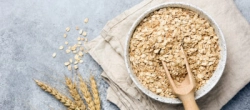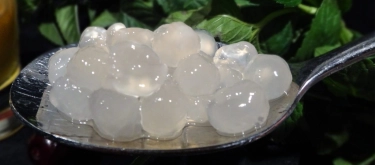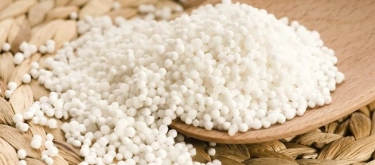Pumpkin seeds: Taste Profile, Aroma, Benefits and Health Risks
Pumpkin seeds, also known as pepitas, are a versatile and nutrient-dense snack. Derived from pumpkins (Cucurbita pepo), these seeds are often enjoyed roasted, raw, or incorporated into various dishes. They offer a unique combination of nutty, earthy, and subtly sweet flavors, making them a popular ingredient in cuisines around the world.
What does Pumpkin seeds taste like?

Pumpkin seeds have a distinctive flavor that is rich, nutty, and slightly earthy. Their taste varies depending on how they are prepared—raw seeds are milder, while roasted seeds develop a deeper, more pronounced nuttiness.
-
Primary Flavor Characteristics:
- Raw Seeds: Mild, slightly sweet, and vegetal with a soft texture.
- Roasted Seeds: Rich, toasty, and nutty, with a hint of bitterness and a satisfying crunch.
-
Aromatic Profile: A warm, earthy aroma that intensifies during roasting.
In-Depth Flavor Analysis of Pumpkin Seeds
Underlying Flavor Notes:
- Nutty Sweetness: A subtle sweetness is balanced by the seed’s natural oils.
- Earthy Undertones: Reflecting their vegetal origin, raw seeds retain a slight grassy note.
- Bitterness: A faint bitterness emerges in roasted seeds, adding complexity.
Impact of Preparation on Flavor:
- Raw Seeds: Softer, lighter flavor, ideal for blending into smoothies or baking.
- Roasted Seeds: Toasting enhances nutty and caramelized notes, perfect for snacking or garnishing dishes.
- Salted or Spiced: Seasonings elevate the natural flavor, creating sweet or savory variations.
Culinary Uses of Pumpkin Seeds
Pumpkin seeds are incredibly versatile and can be incorporated into a wide variety of dishes, from snacks to sophisticated recipes.
Primary Uses:
- Snacking: Roasted pumpkin seeds, seasoned with salt or spices, are a popular snack.
- Baking: Ground or whole seeds are used in breads, muffins, and granola.
- Garnishes: Sprinkle on salads, soups, or roasted vegetables for added crunch and flavor.
- Sauces and Pestos: Blended seeds can substitute for nuts in pesto or be added to sauces for texture and richness.
- Butters and Pastes: Pumpkin seed butter is a creamy, nutty alternative to peanut or almond butter.
Ideal Pairings:
- Sweet: Honey, maple syrup, and dried fruits enhance their natural sweetness.
- Savory: Garlic, smoked paprika, and cumin complement their earthy flavor.
- Fruits: Pairs well with cranberries, apples, and citrus.
- Dairy: Sharp cheeses like Parmesan or creamy ones like feta contrast beautifully with their texture.
Health Benefits of Pumpkin Seeds
Pumpkin seeds are a nutritional powerhouse, offering a range of health benefits that make them a valuable addition to any diet.
Key Nutrients and Benefits:
- Rich in Protein: A plant-based protein source suitable for vegetarians and vegans.
- High in Magnesium: Supports bone health, energy production, and muscle function.
- Heart-Healthy Fats: Contains omega-3 and omega-6 fatty acids that support cardiovascular health.
- Packed with Antioxidants: Vitamin E and carotenoids help reduce inflammation and oxidative stress.
- Zinc and Iron: Essential for immune support and oxygen transport.
Potential Precautions:
- Caloric Density: While nutritious, pumpkin seeds are calorie-dense, so portion control is advisable.
- Allergies: Rare but possible; those with seed allergies should consume cautiously.

Fun Facts About Pumpkin Seeds
- Ancient Snack: Pumpkin seeds have been consumed since Aztec times, where they were valued for their flavor and nutritional content.
- Pepitas vs. Pumpkin Seeds: Pepitas are the hulled, green seeds often used in cooking, while the white seeds include the outer shell.
- Versatile Crop: Pumpkin seeds are harvested from various pumpkin varieties, with each type offering slight flavor differences.
- Global Use: Common in Mexican cuisine (e.g., mole sauce) and increasingly popular in plant-based diets worldwide.
Resources
Books and Publications for Further Reading:
-
"Seeds: A Natural History" by Carolyn Fry
– A comprehensive guide to the history, uses, and nutritional value of seeds, including pumpkin seeds. -
"The Flavor Matrix" by James Briscione and Brooke Parkhurst
– Explores the flavor profiles of various ingredients, including nuts and seeds, and their culinary applications. -
"On Food and Cooking: The Science and Lore of the Kitchen" by Harold McGee
– Discusses the chemistry and preparation techniques of seeds and nuts, offering insights into roasting and seasoning. -
"The Seed Underground: A Growing Revolution to Save Food" by Janisse Ray
– Highlights the importance of seeds in food culture, including traditional uses of pumpkin seeds.






